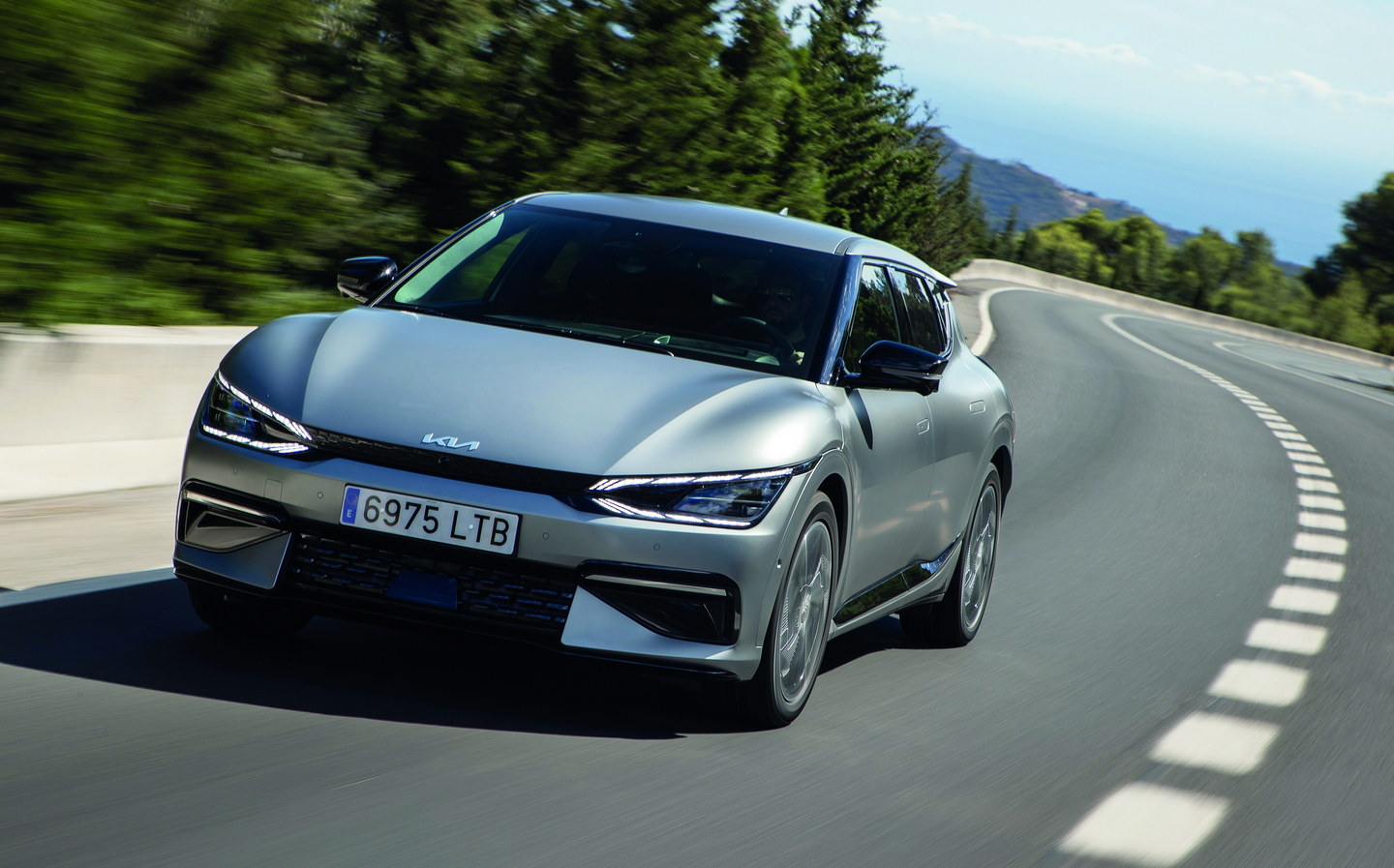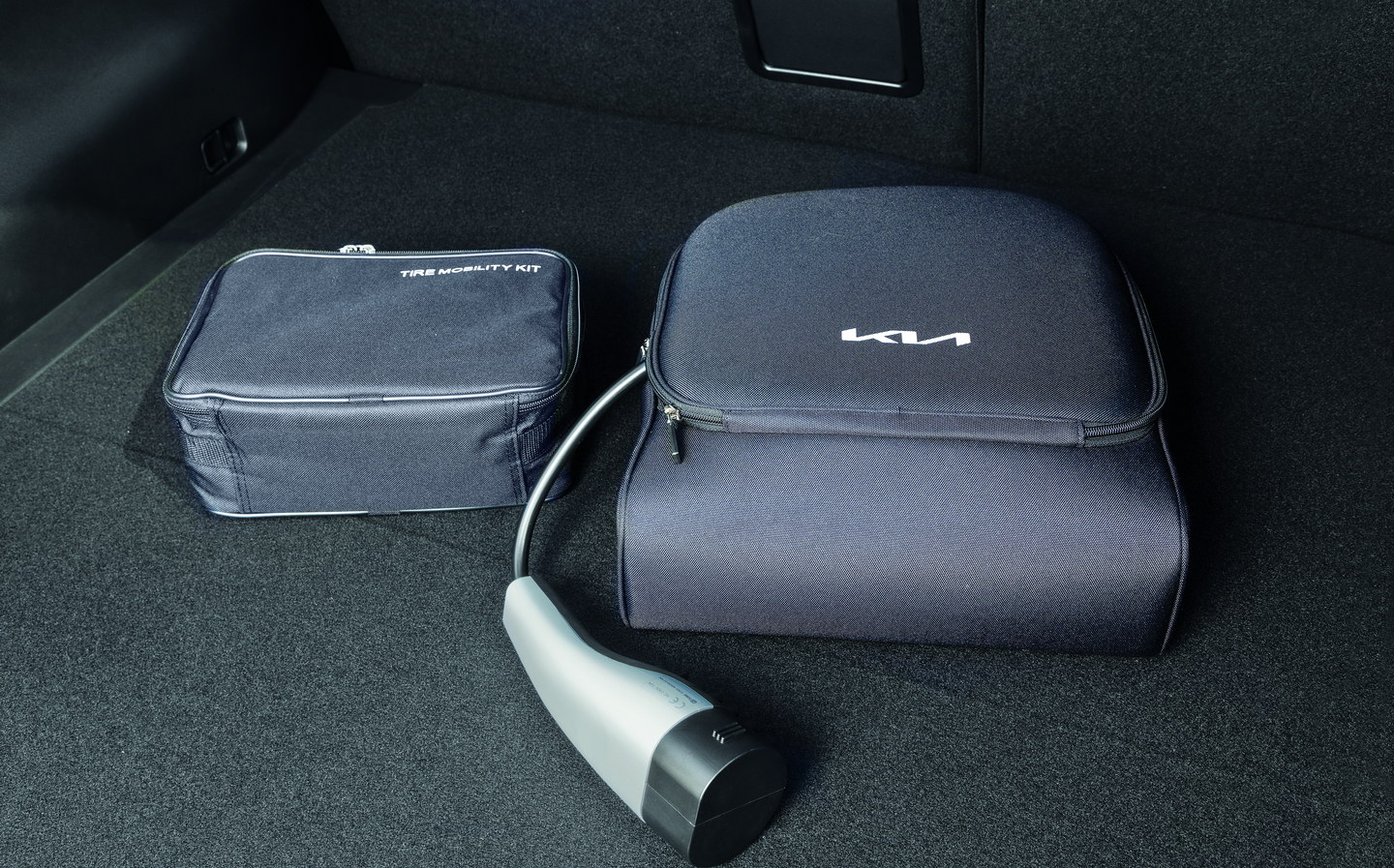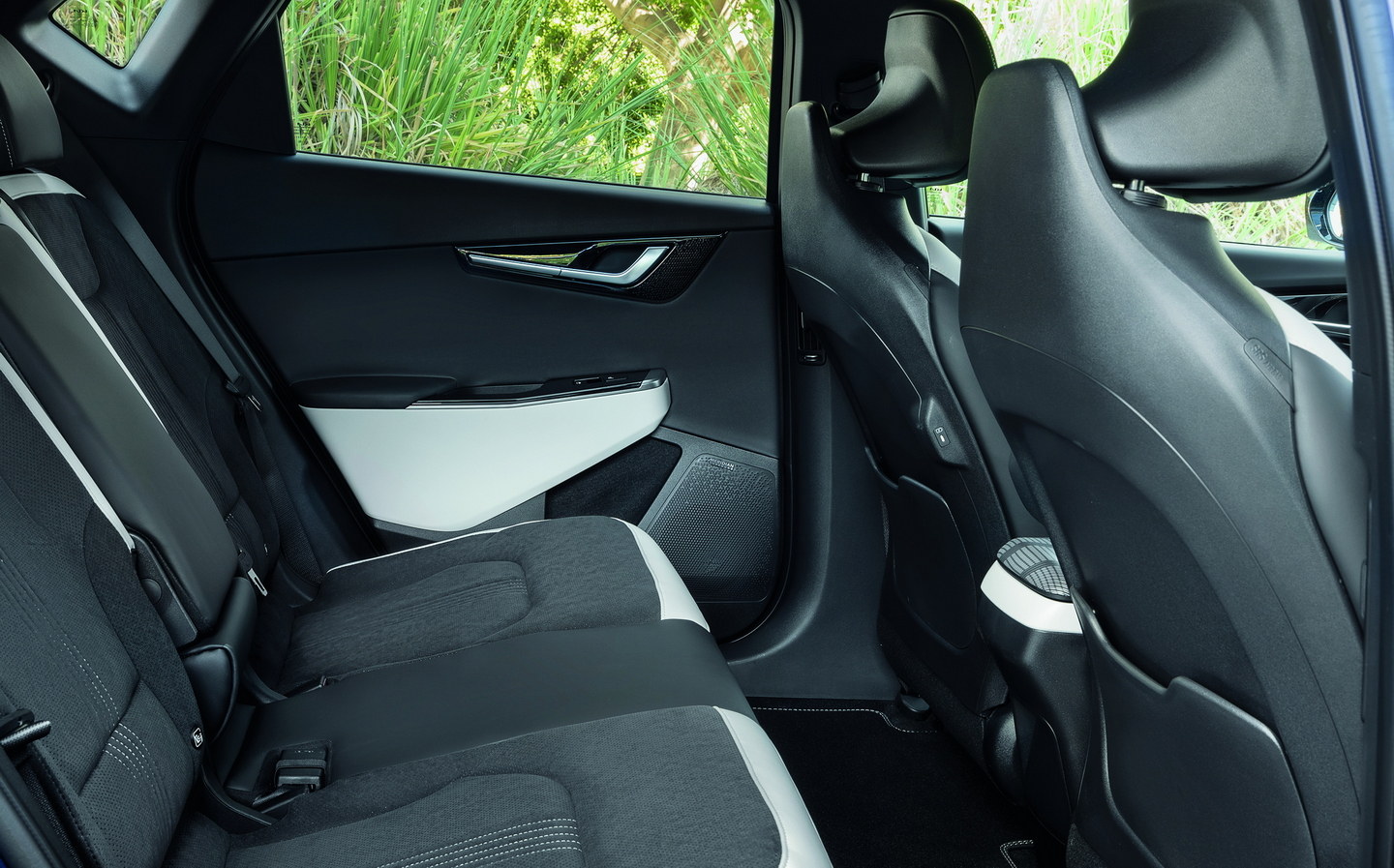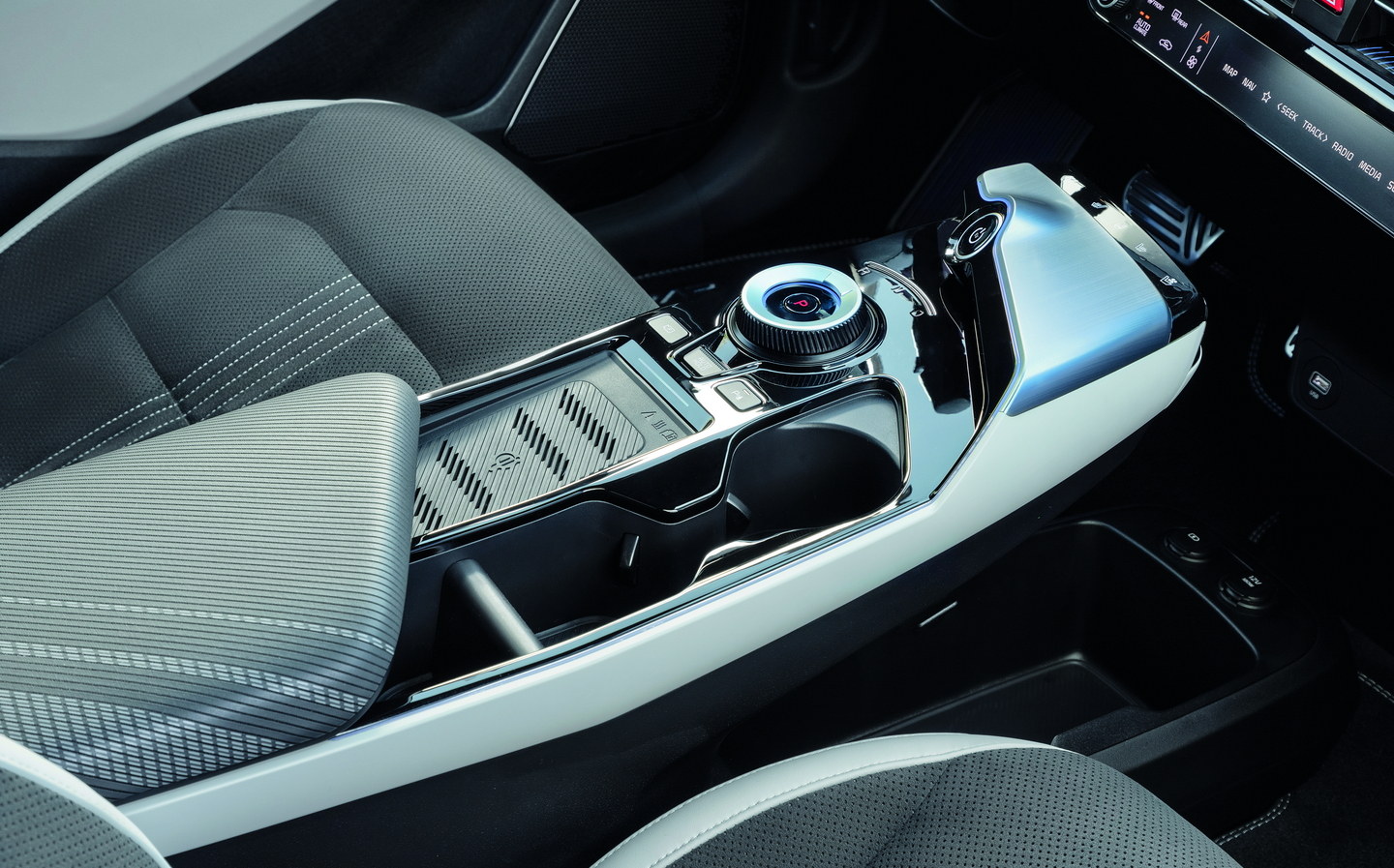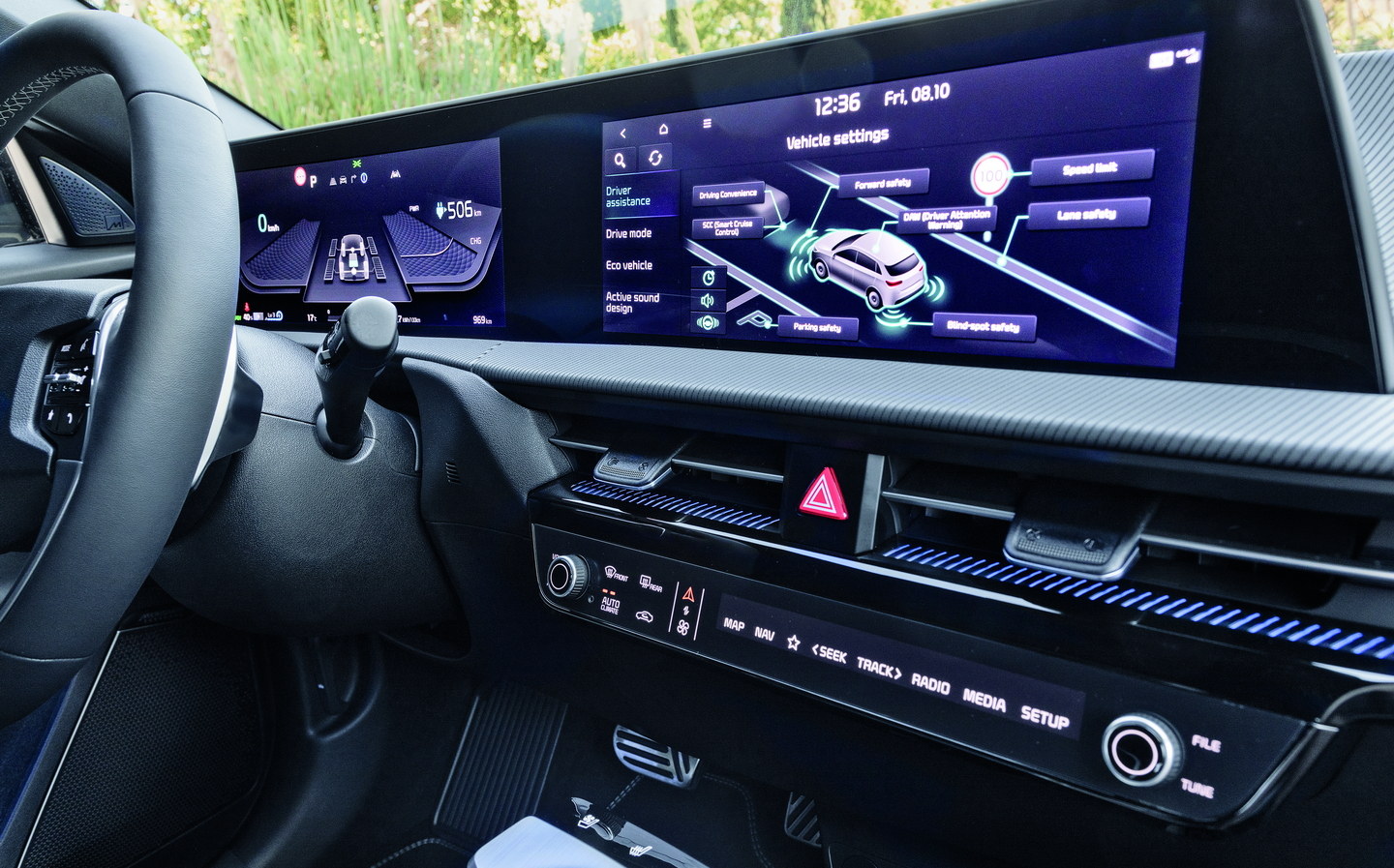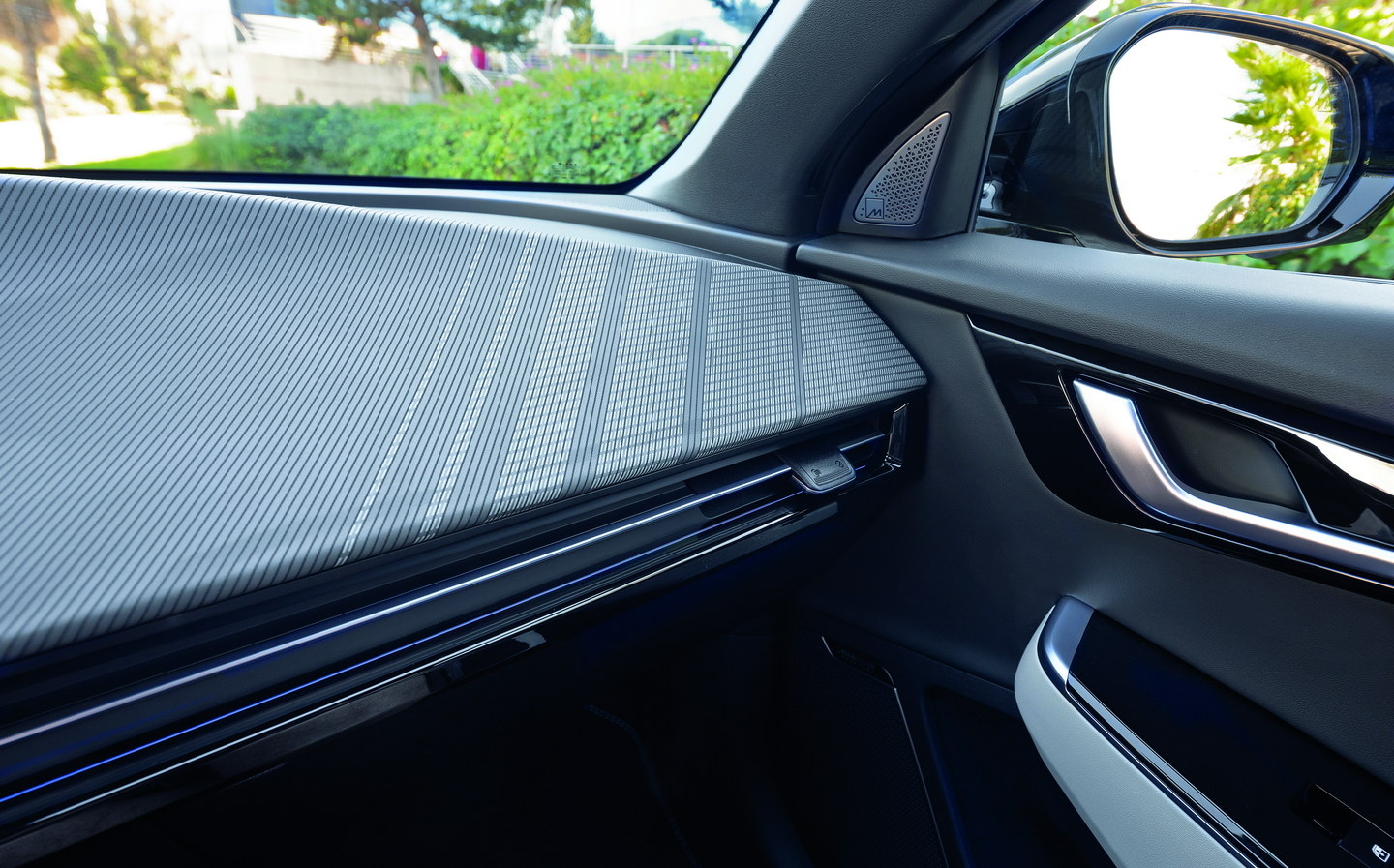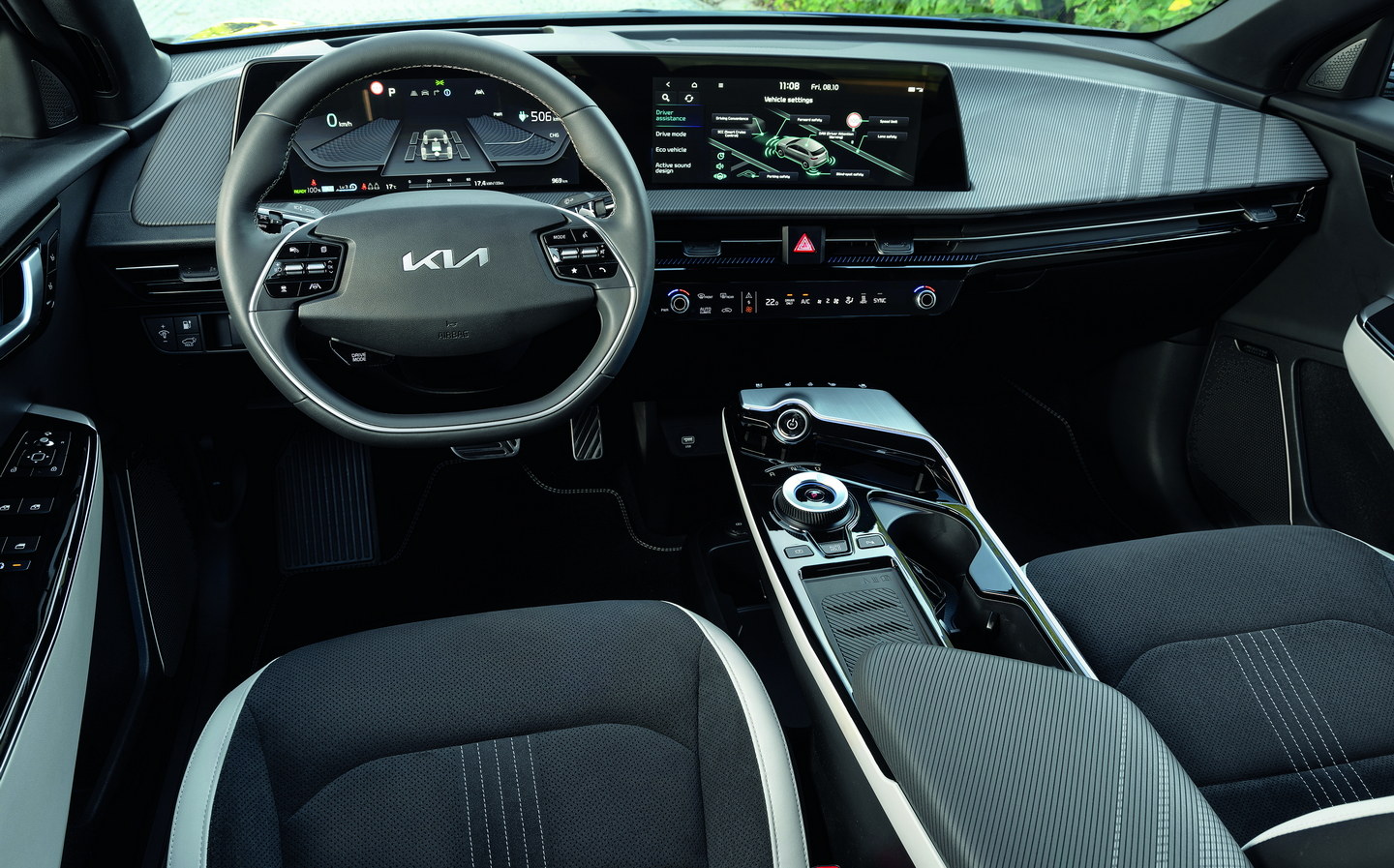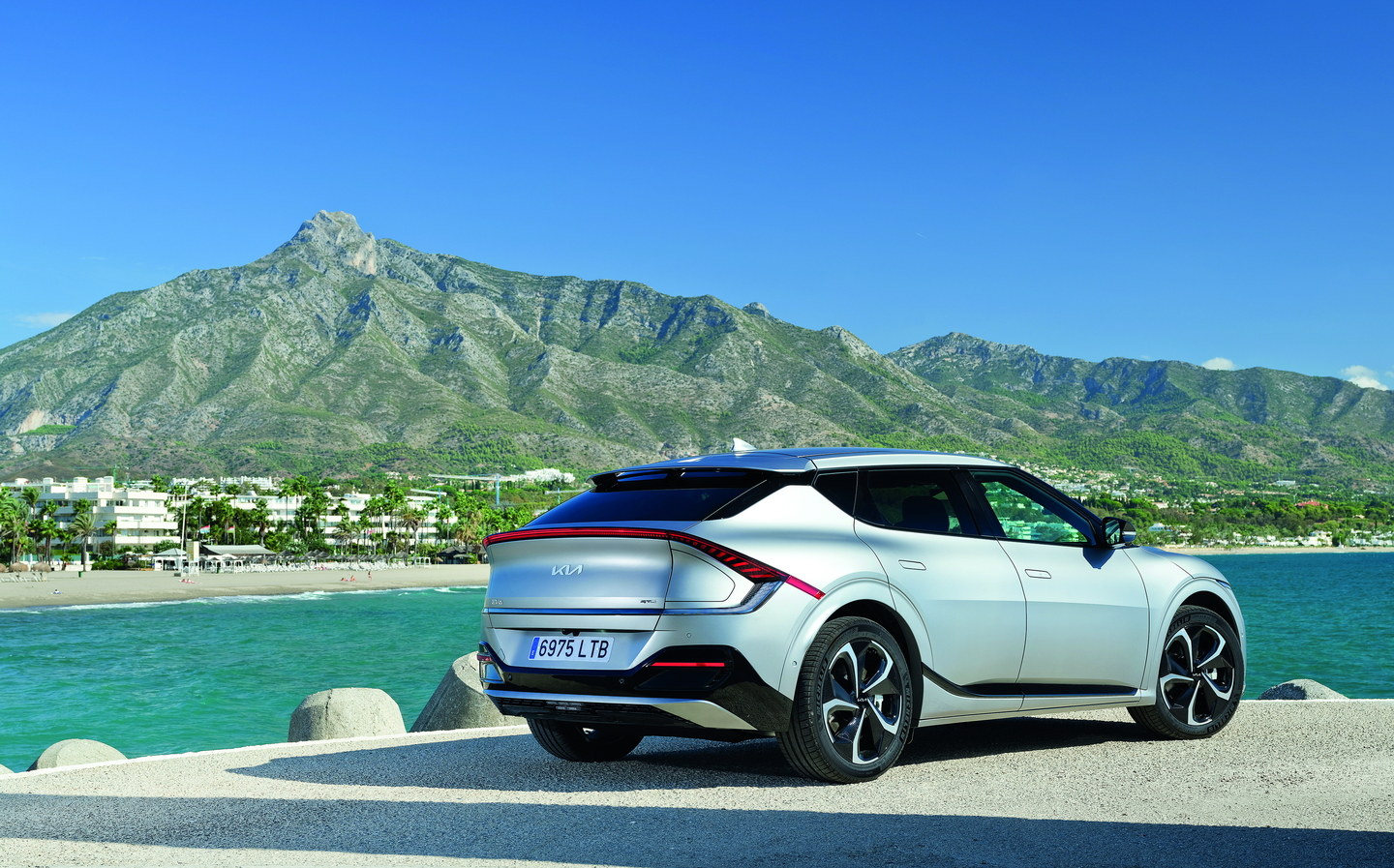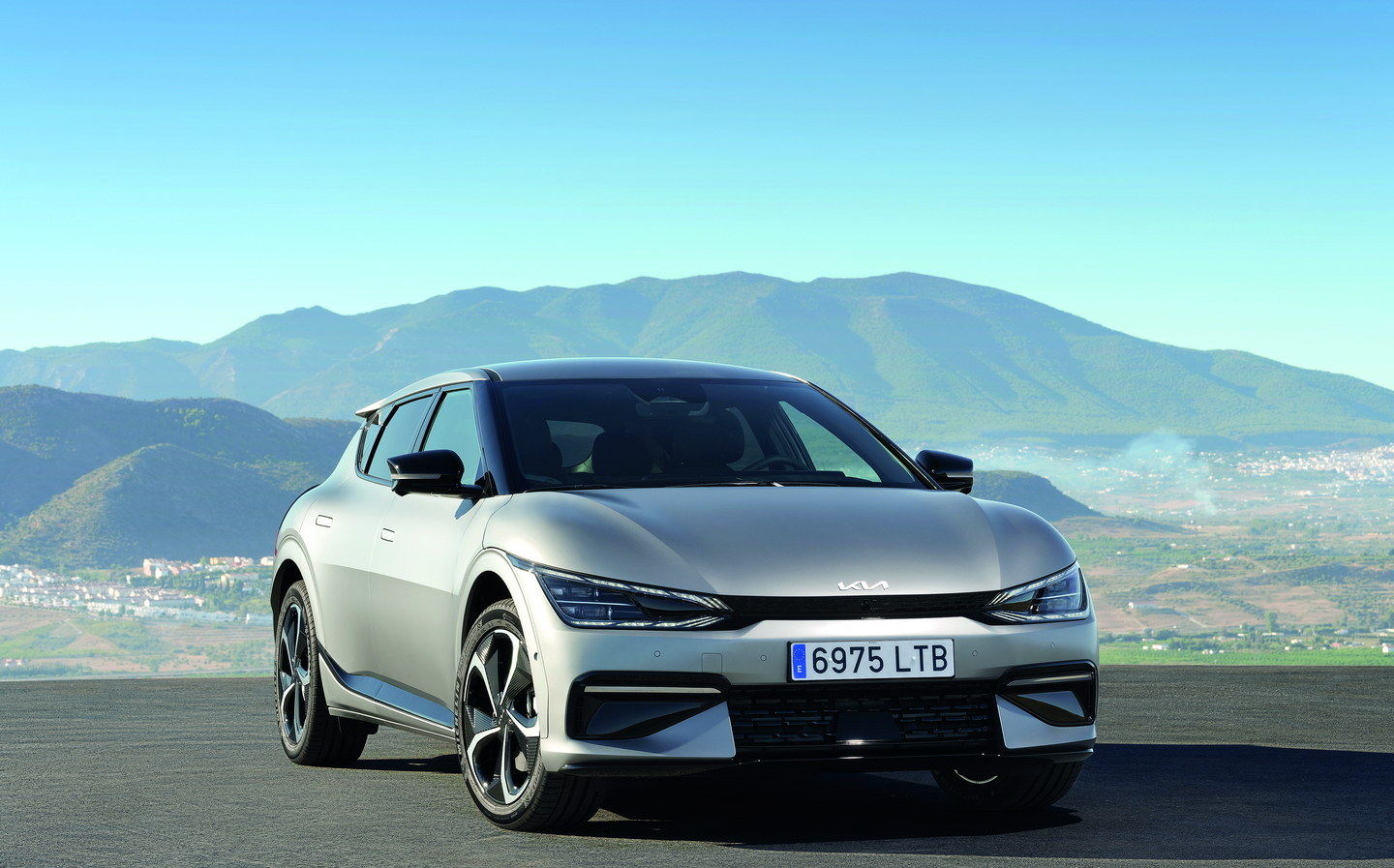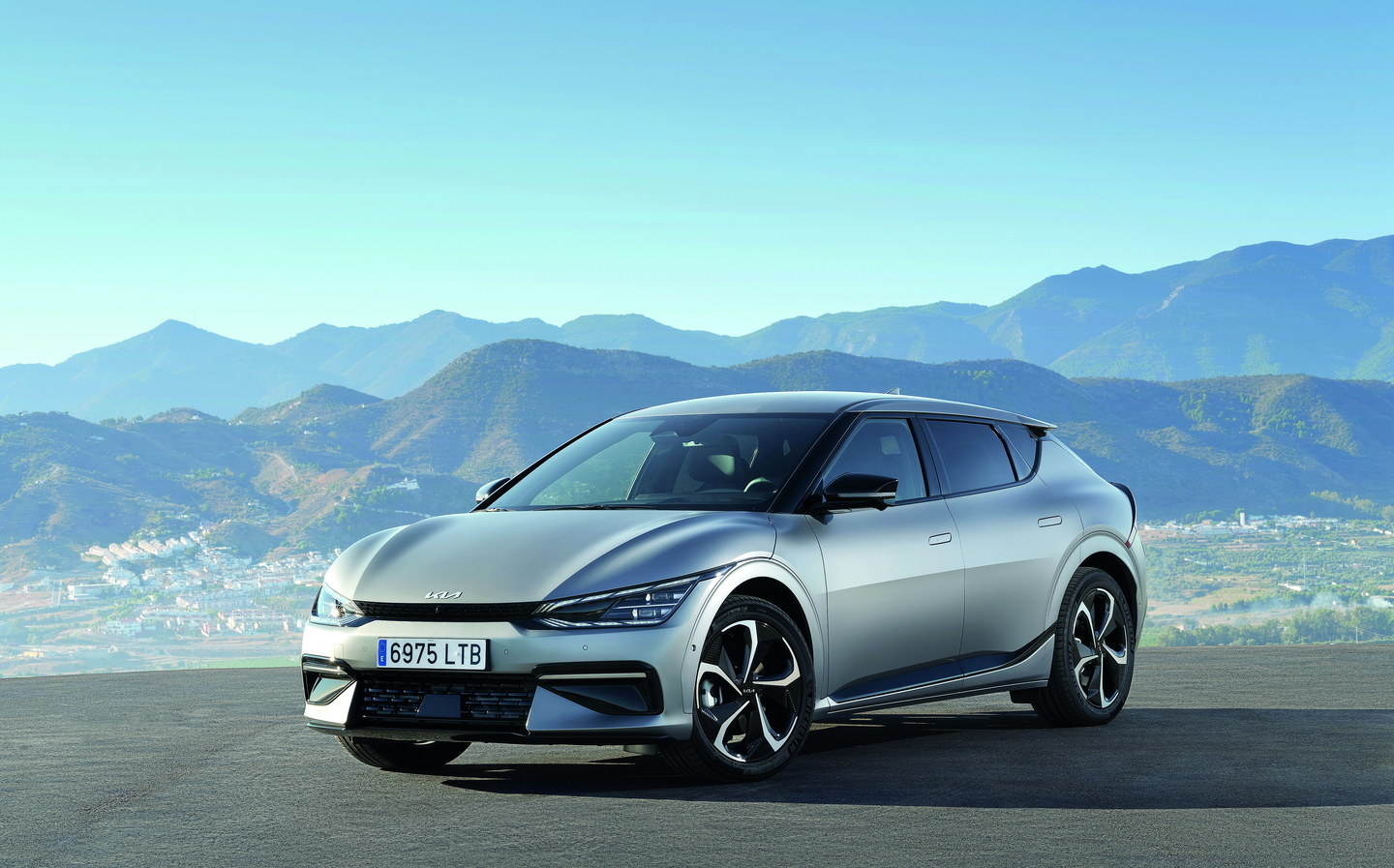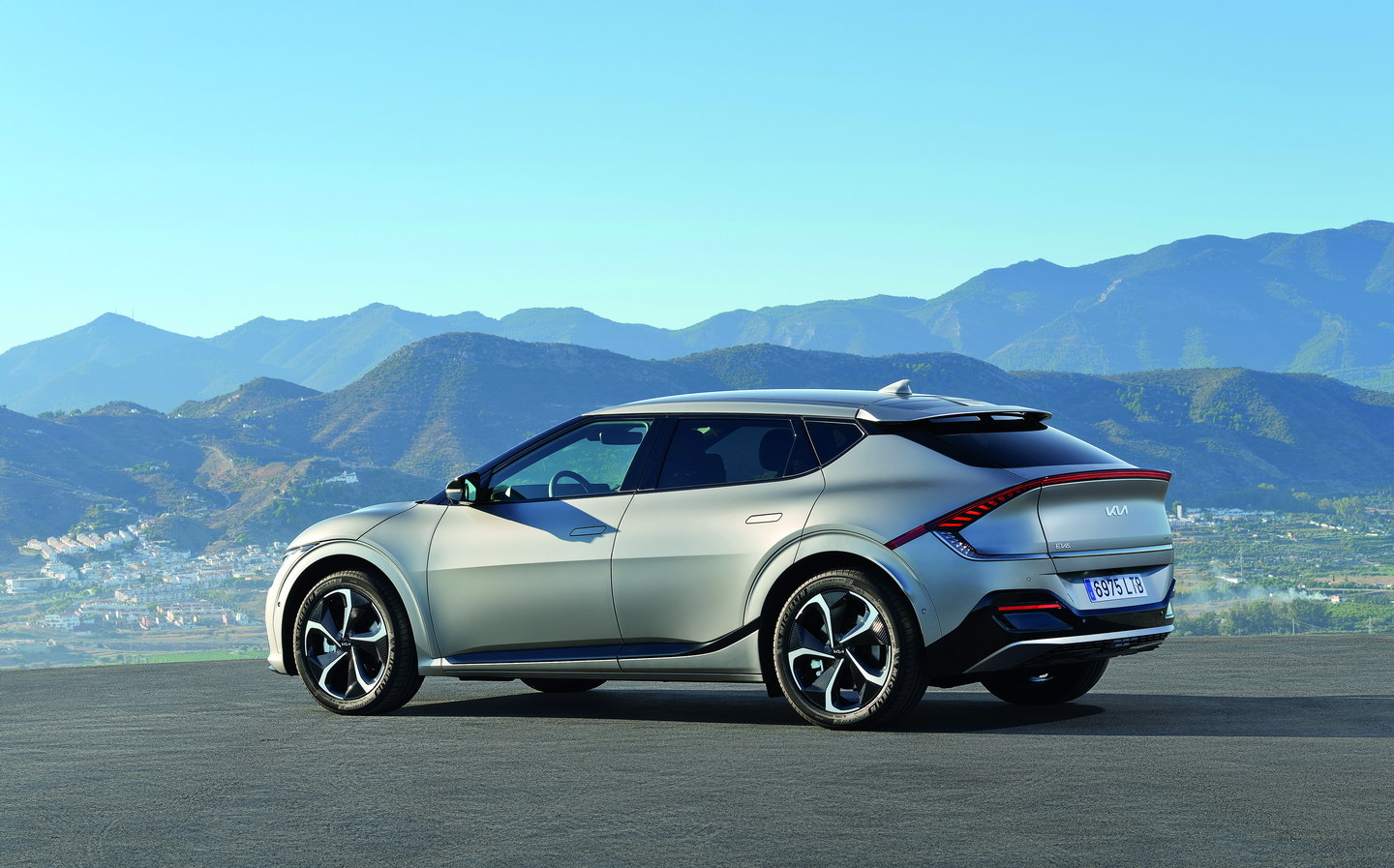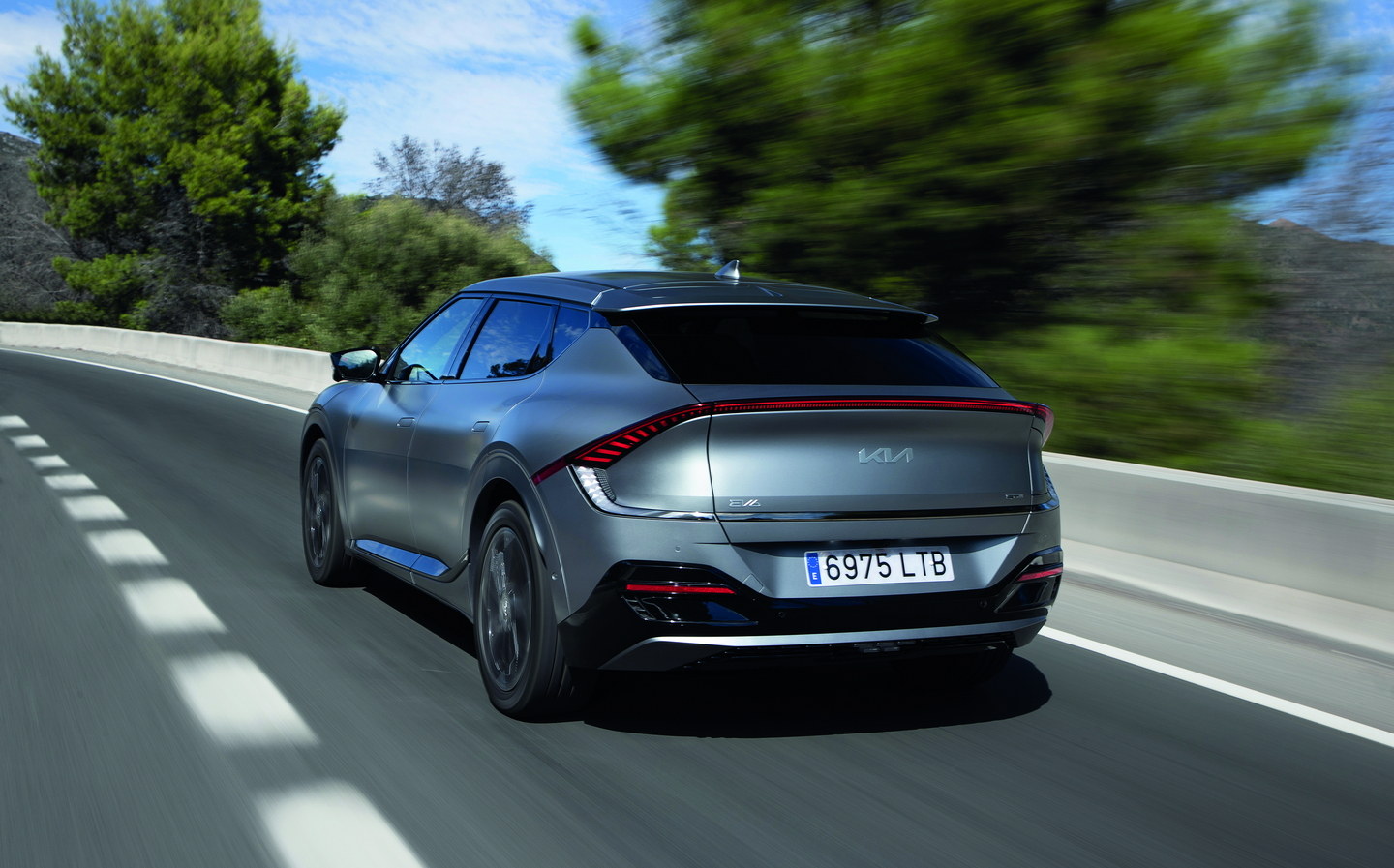We've driven the 328-mile Kia EV6 — here's why it takes a spot at the front of the electric car pack
It’s a Kia, but not as you know it
THINGS are moving quickly in the world of electric cars and Kia is elbowing its way to the front of the pack. The EV6 is the Korean brand’s new flagship electric car that sits above the e-Niro and Soul EV — and it introduces a new era of design for the company.
The EV6 uses similar electric hardware to the Hyundai Ioniq 5 although the battery supplier is different and in terms of design, the two cars couldn’t look more different.
Within the floor is a 77.4kWh battery that can provide up to 328 miles on a single charge. There is the choice of rear- or all-wheel drive with two power outputs and two specification grades. In time there will also be a high-performance version with 577bhp.
Kia is touting near-supercar levels of accelerative performance for that GT range-topper, but the regular models are no slouches either. The all-wheel-drive EV6, for example, will reach 62mph from a standing start in 5.2 seconds — how much more performance do you need from an electric crossover?
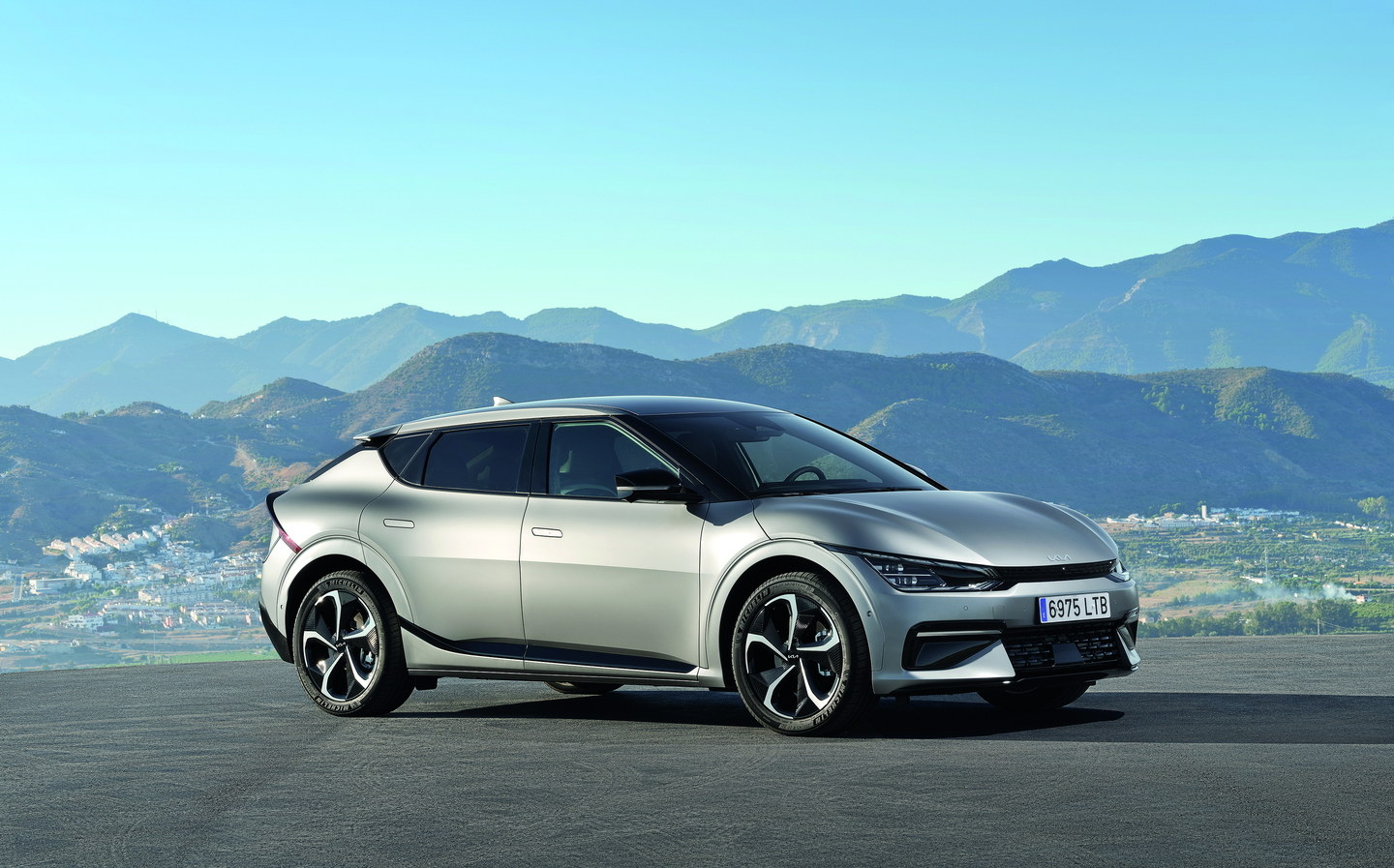
Exterior design and rivals
Having spent so many years making the ‘Tiger nose’ grille such a mainstay of the Kia range, the designers must have felt a little deflated when the engineers told them it wasn’t a requirement for the electric EV6.
That didn’t stop them pumping up the Kia’s wheel arches to add to its presence and surprisingly, one of the cars that influenced the Kia’s design was a 1970s rally superstar, the Lancia Stratos. That sounds far-fetched until you start to look closely at the styling around the rear.
A light bar comes up from the hind quarters and wraps around the bulging boot to double up as a small rear spoiler. This feature is one of the most distinctive aspects of the Kia’s design.
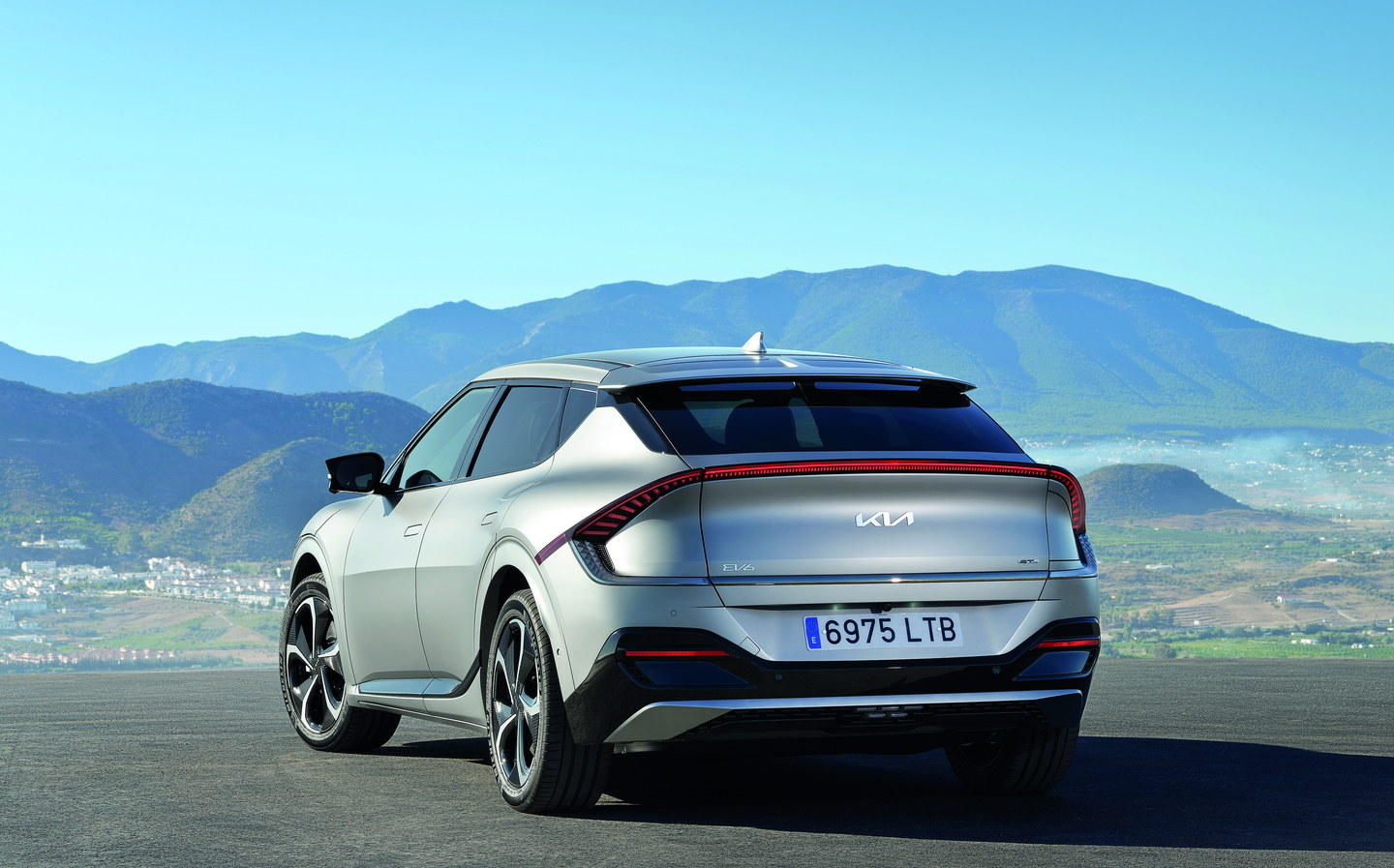
Measuring almost the same length as Kia’s seven-seat Sorento SUV, the EV6 is no city car, and it rides on 19in wheels as standard, though most are expected be sold with 20in rims.
It has a long wheelbase (the distance between the front and rear axles) that pushes those wheels out to either end of the car, to the benefit of passenger space.
Without a big, tall combustion engine in the front the Kia has a neat clamshell bonnet design that slides down around the triangular LED headlights. This short front and the raked windscreen have a hint of Jaguar I-Pace about them. Kia is also one of a growing number of manufacturers to fit door handles that sit flush with the bodywork when the car is locked, as it helps reduce drag through the air.
How the air flows over the EV6’s bodywork is further influenced by items such as the mini winglets that protrude from the rear spoiler. Look around the rear of the car and you’ll also spot the lack of a rear wiper. Instead, air is funnelled through the roof spoiler and over the rear glass to clear water away at speed, though we’ll have to wait to see how well it works during a damp British winter.
The Kia EV6 is far from conventional looking, with a futuristic sense to its styling and it’s more positively striking that other EV rivals such as the Volkswagen ID.4 and even our 2021 Car of the Year, the Ford Mustang Mach-E.
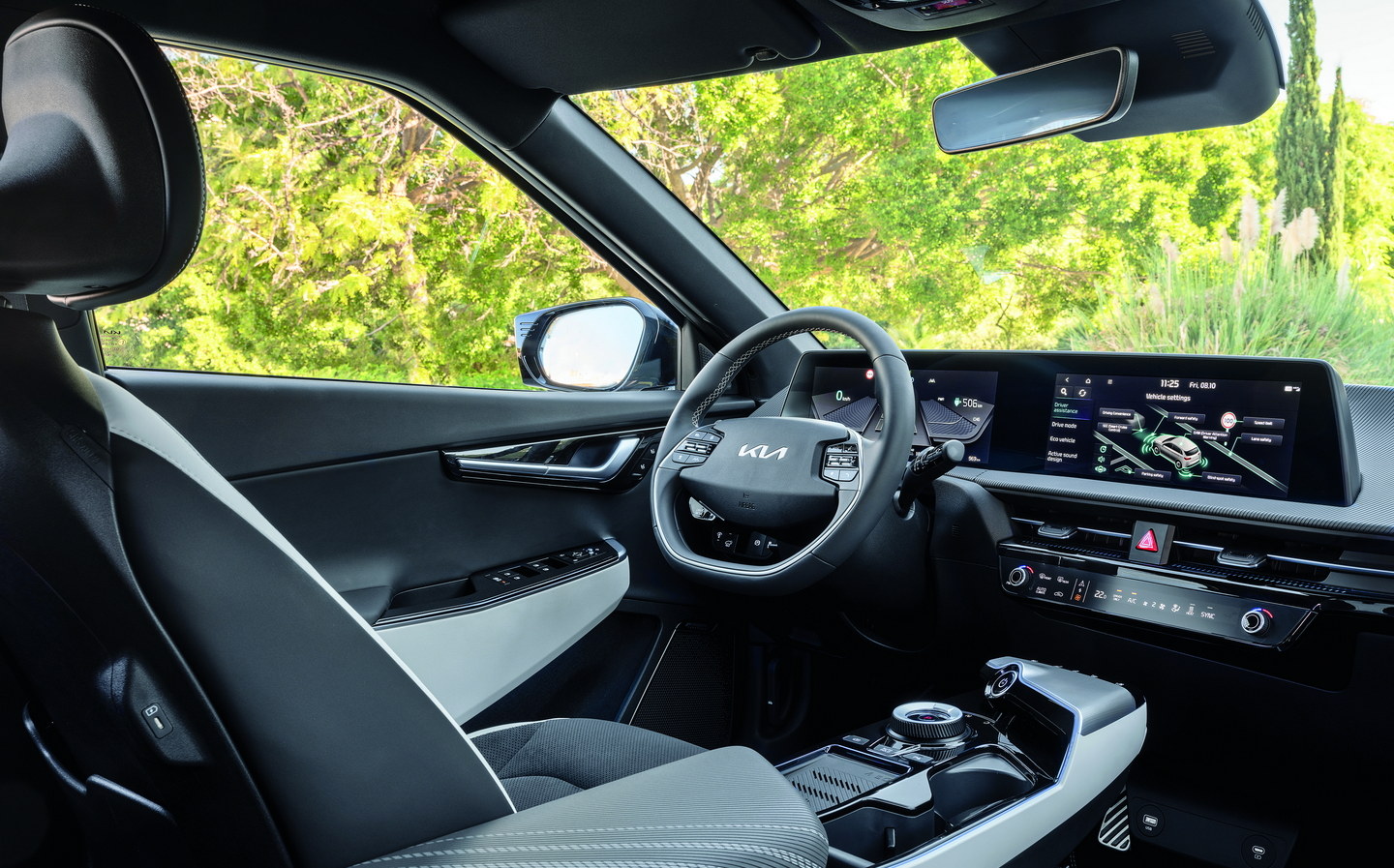
Interior and practicality
Space is one thing of which the EV6 isn’t short, but it also has a real wow factor that hits you the first time you sit in the driver’s seat. Were it not for the large new Kia typeface set into the two-spoke multifunction steering wheel, guessing who produced this cabin might not be so easy.
A monolithic digital instrument screen gently curves its way across the dashboard. Comprising two 12.3in displays, it presents everything you’ll ever need while in the car in a straightforward way — and the infotainment system is one of the easier ones on the market to navigate.
To keep button count to a minimum on what is already a slender fascia, the climate controls and menu shortcut tabs are all on a touch-sensitive bar that presents different functions according to mode, much like a TouchBar on a new Apple MacBook.
The centre console juts forward from between the front seats but doesn’t meet up with the dash. This unit houses the start button that is cleverly angled towards the driver, making it one of the first things they see when climbing in, and it appears to be blanketed by a metallic cover.
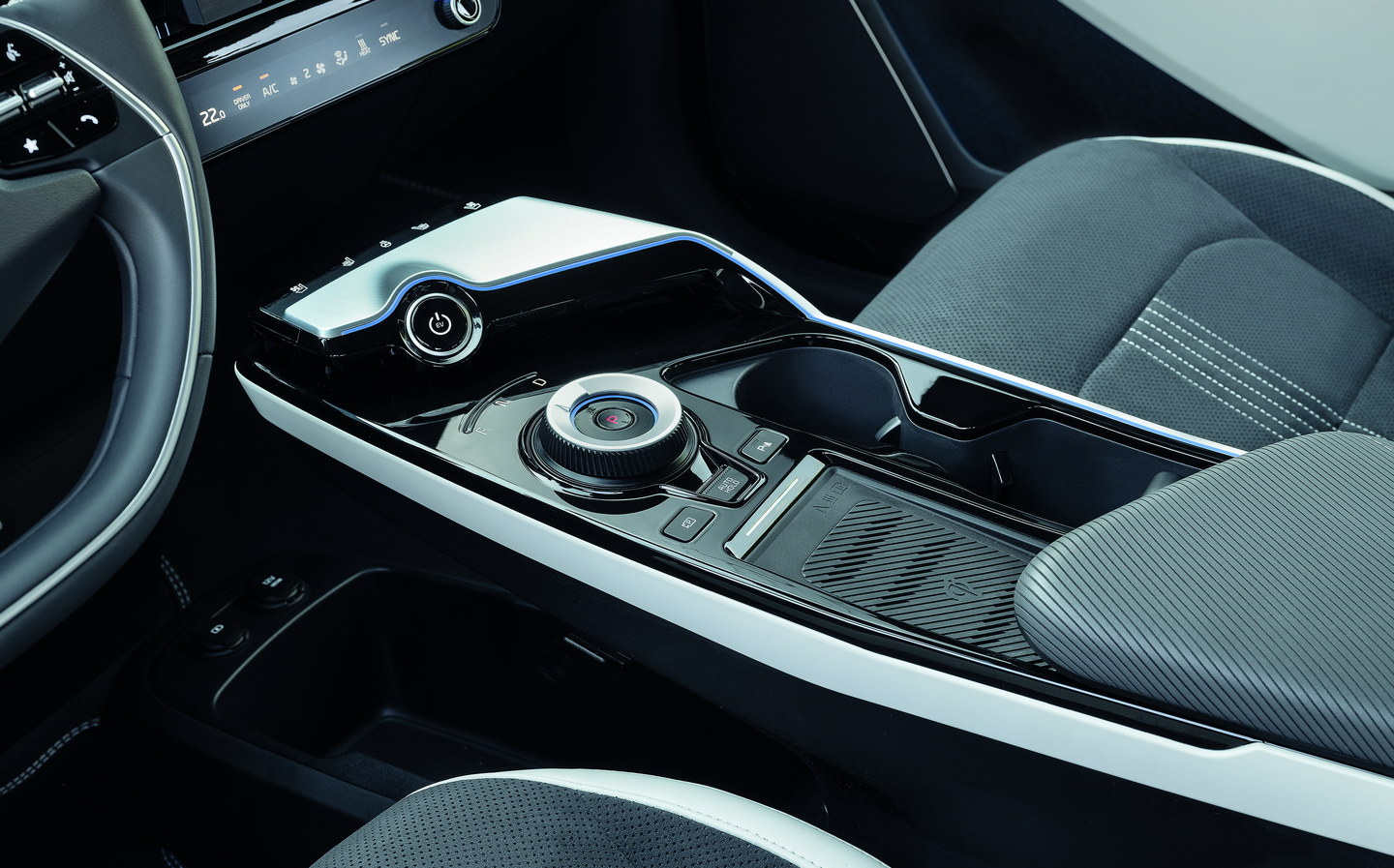
A rotary dial for selecting forward or reverse gears has a nice tactile feel despite being plastic, while cupholders, a wireless charging pad and an under-armrest compartment make up the rest.
Beneath and forward of this central unit is more stowage space for small bags and there is a brace of different charging ports, from 12-volt to USB-C. It’s a gadget-lover’s dream as there are so many options for plugging in devices — as with the Ioniq 5, the Kia even has a 230-volt socket in the rear that allows vehicle-to-load (V2L), meaning you can use the car as a giant powerbank to power other appliances — more on that below.
But that’s not the EV6’s party piece. Thanks to its width and generous wheelbase those in the back enjoy plenty of room to stretch out. The space-age looking front seats are shaped in a way to maximise space for the rear passengers while also allowing a good view into the front of the cabin and of the road ahead.
Knowing that some owners will prefer to wait in the car while it charges, Kia has designed front seats that can recline like a business class aeroplane seat, to make it easier to relax.
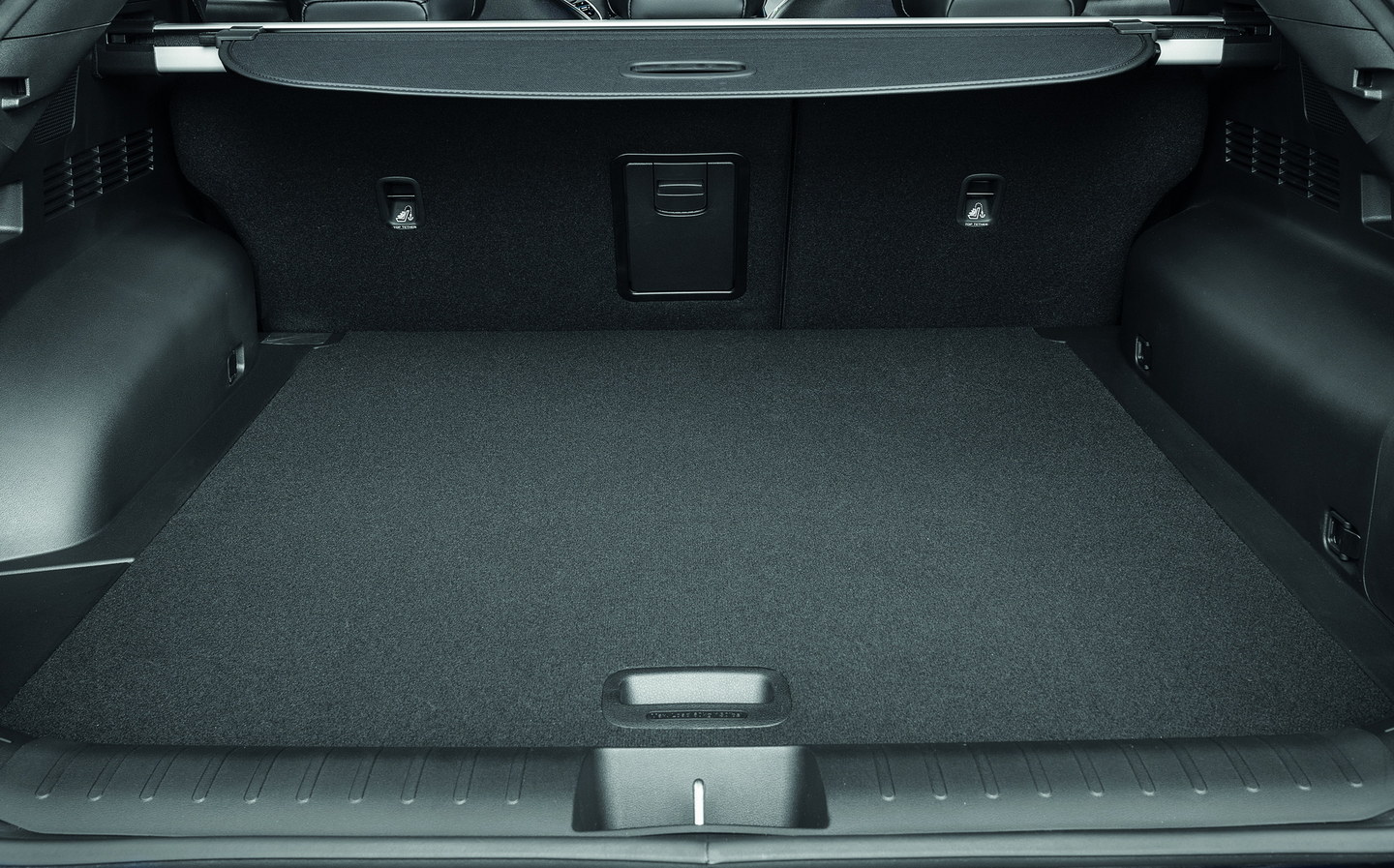
All EV6s have a front storage compartment under the bonnet, though they come in two sizes. In the rear-wheel-drive version it holds 52 litres of luggage but that figures drops to 20 litres with all-wheel drive. A boot volume of 528 litres gives it reasonably good carrying capacity, while dropping the rear seats increases cargo volume to 1,300 litres. All significantly less than the new Tesla Model Y, but impressive nonetheless.
Technology and safety
We mentioned party pieces and the Kia’s comes in the form of its V2L capability. That means vehicle-to-load, which is a techy way of saying that you can plug electrical items directly into its charge port and draw power from the battery.
Suddenly everything from on-site power for camping trips to topping up your e-bike’s battery becomes a possibility. It’s powerful enough to even charge up another electric car.
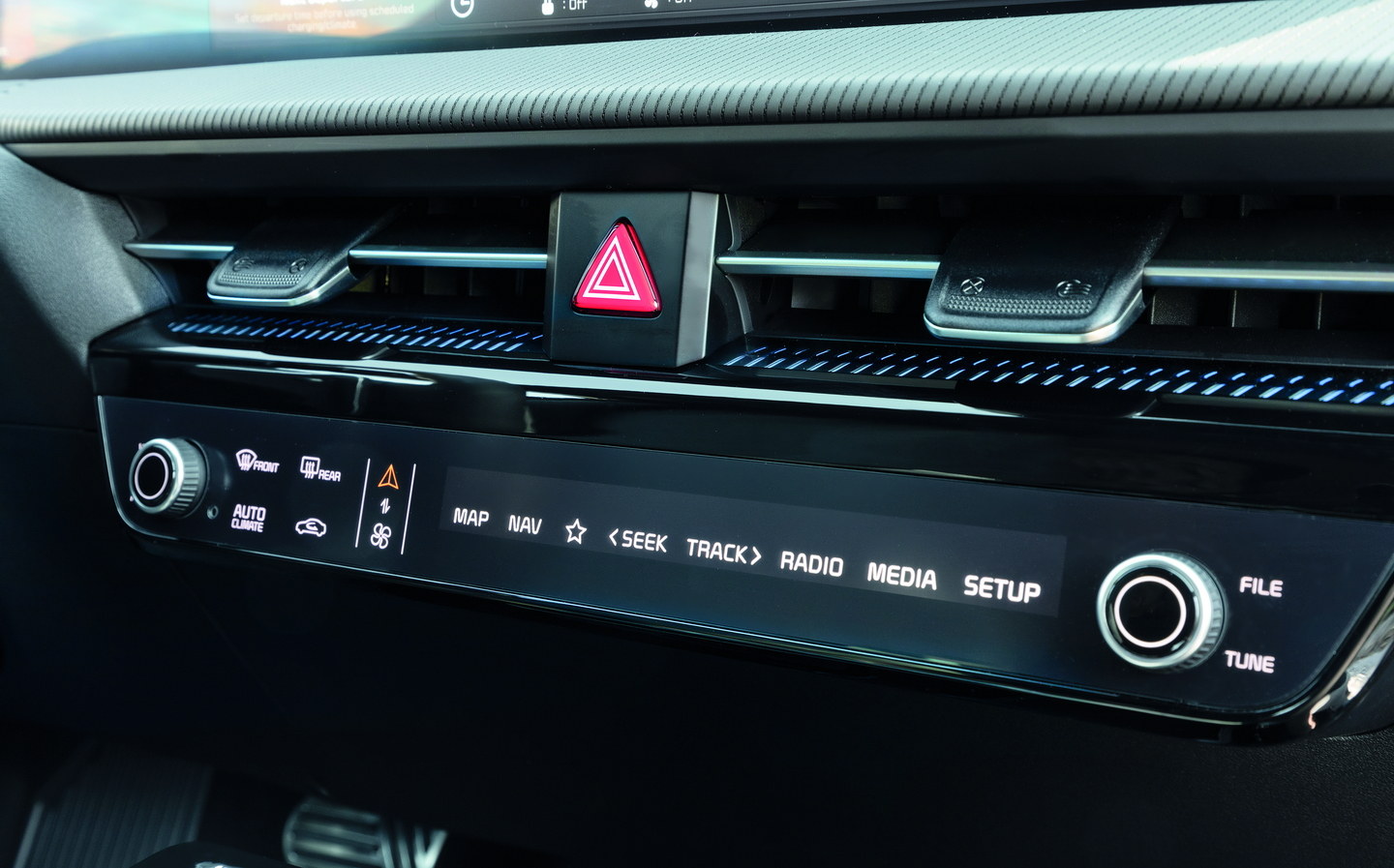
Kia also has a utility mode that keeps important systems such as the air conditioning and infotainment system active when the car is turned off, and does so without risk of draining its 12-volt battery (yes, even electric cars still have these for non-drivetrain electrical systems).
There’s a host of driver assistance systems available, including a nifty remote park assist that allows you to pilot the car into a tight parking space from outside the vehicle.
On the safety side of things are most of the typical features such as forward collision avoidance, lane keeping and a multi-collision brake assist system that automatically applies the brakes in the event of an accident to stop the car from moving any further.
Performance, electric range and charging times
Unlike some other electric car brands Kia only offers one battery size in the EV6. At 77.4kWh it is on the larger side of what’s available in the market and it gives a 328-mile driving range on the WLTP cycle.
For the rear-wheel-drive EV6, maximum power output is rated at 226bhp, and it will accelerate form 0-62mph in 7.3 seconds and go on to a top speed of 114mph. That top speed is the same with the more powerful 321bhp all-wheel-drive model, but standing-start acceleration to 62mph takes only 5.2 seconds.
Thanks to its advanced 800-volt electrical architecture, the Kia is capable of charging at very high rates, so at a 350kW charger it can recharge its battery to 80% in as little as 18 minutes. While these chargers may be rare right now, Kia has future-proofed the EV6 for the coming years.
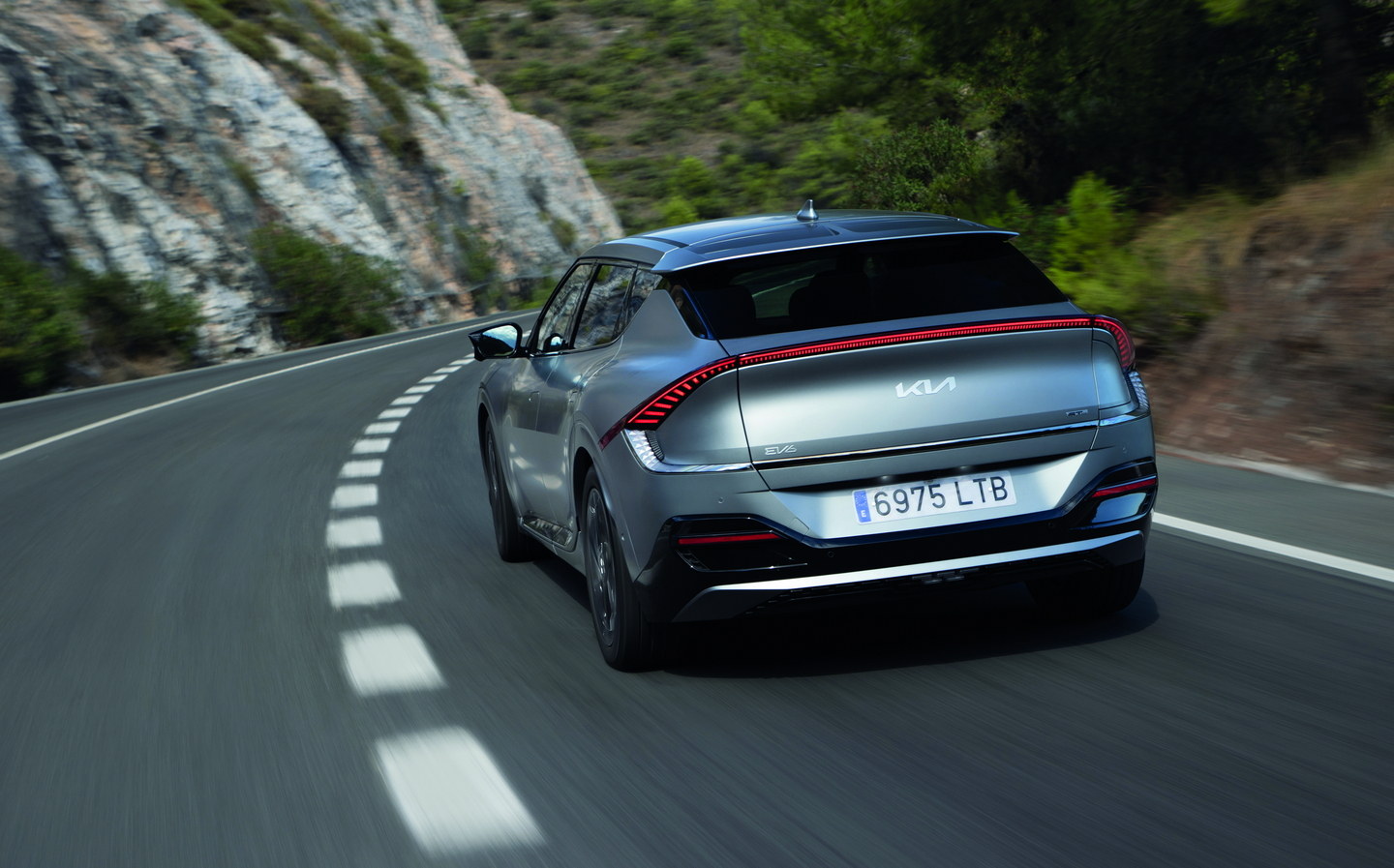
Ride and handling
How electric cars perform on the road is becoming one of the key differentiators, so Kia has paid close attention to ensuring the EV6 hits the right balance between comfort and dynamic performance. A crucial element is the suspension that uses a new damper design that can absorb the bigger hits while still maintaining a smooth and supple ride.
Across a variety of surfaces the system works well, and even on the larger 20in wheels of the GT-Line model there is a pleasingly elevated level of comfort. This is combined with the smoothness of the electric motor. Even the more modest 226bhp EV6 is no slouch, and it cruises at motorway speeds without putting an obvious dent into its battery range.
The Kia also does a decent job of hiding its 2,053kg weight. A series of successive bends shows it manages direction changes with ease, but for a more enjoyable driving experience it’s worth upgrading to the all-wheel-drive transmission as its bump in power is noticeable.
There are different drive modes to choose from and they do make a clear difference to how reactive the car is to accelerator inputs, while there are more subtle changes to the steering, too.
In urban settings the EV6 is whisper quiet and its trick suspension means that it glides effortlessly over speed humps and leaves you feeling cosseted from the outside environment.
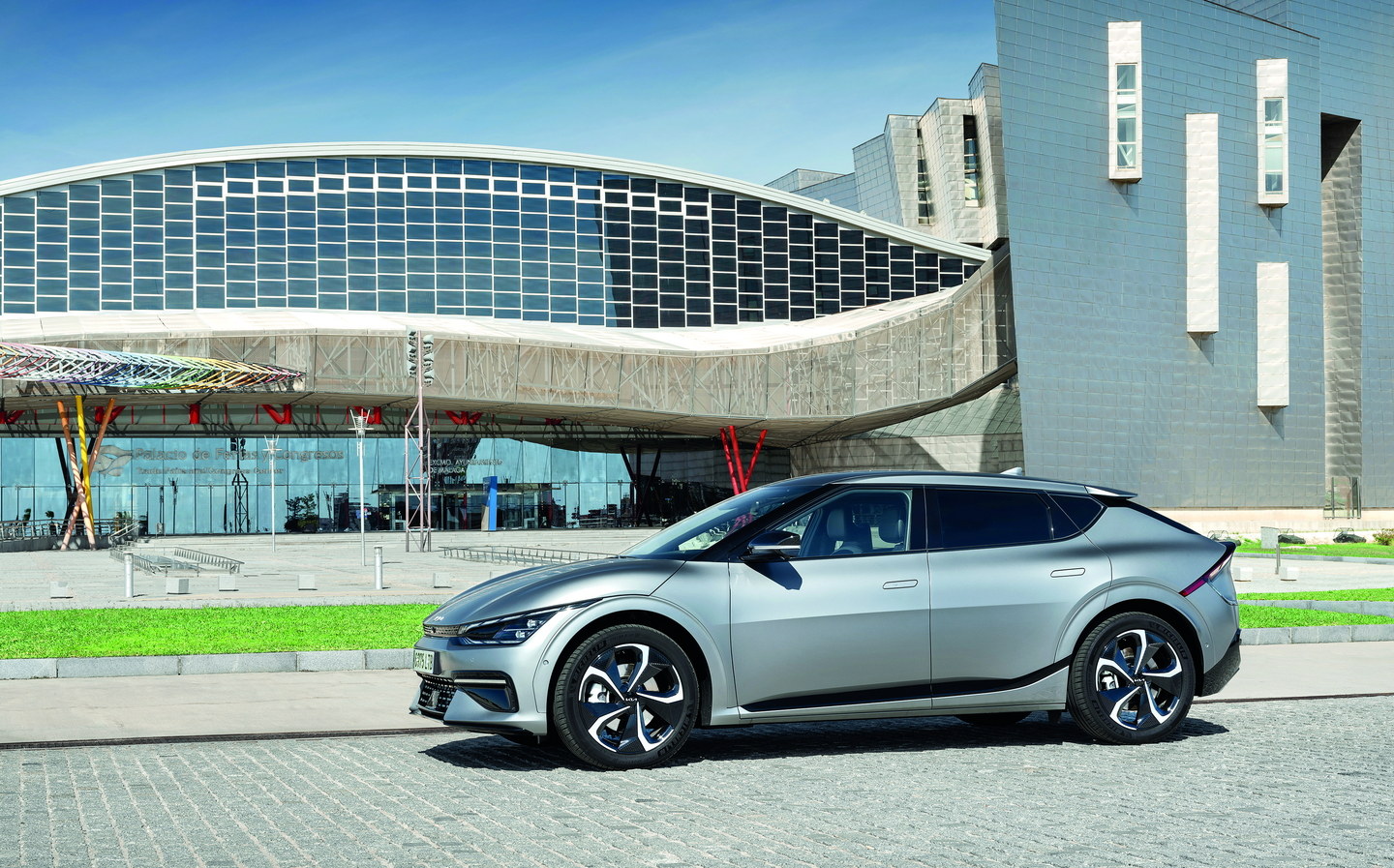
Pricing and on-sale date
Pricing for the Kia EV6 starts at £40,945 on the road for the ‘Air’ specification with rear-wheel drive – and the order books are now open. There is a mid-range EV6 GT-Line that is available with the 226bhp rear-wheel-drive powertrain or a 321bhp all-wheel-drive version. This choice is repeated for the top-spec GT-Line S, with the AWD model costing £51,945. As with its other cars, Kia includes a seven-year/100,000-mile warranty with the EV6.
Verdict: 2021 Kia EV6 review
The Kia EV6 backs up its striking appearance with an on-road performance that puts it right at the front of the EV pack. Despite having no shortage of good competition, there are many aspects that put the Kia ahead, from the impressive cabin layout that is crammed with features and creature comforts to the roominess that will make it a hit with families.
Topping that with an advanced electrical architecture for really rapid charging and a healthy slice of performance, the EV6 will change what many might have thought about Kia in the past.
Tweet to @LordHumphreys Follow @LordHumphreys
- After reading this review of the 2021 Kia EV6, you might want to see our review of the Hyundai Ioniq 5
- Also check out what we said about the new Audi Q4 e-tron
- Here are all the car makers’ electric car plans


